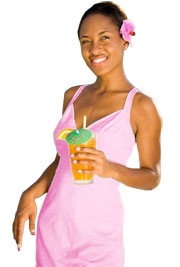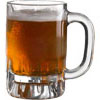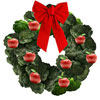- How much is it safe to drink?
- How much alcohol is consumed in the festive season?
- Tips for safe alcohol consumption in the festive period
- Remember the difference between a standard drink and a serving of alcohol
- Keep track of how much you drink
- Set a limit and say no when you’ve had enough
- Space alcoholic drinks and drink in moderation
- Choose low-alcohol options
- Don’t forget to eat
- Don’t drink and drive
Introduction to alcohol and the festive season

Social time is important and can have many health benefits, such as enjoyment and stress relief. However, people who consume too much alcohol can endanger their health both in the immediate and long term. It is therefore an important time for people to be informed about how to consume alcohol safely and be careful to avoid consuming alcohol in quantities that put their health at risk.
How much is it safe to drink?
The National Health and Medical Research Council (NHMRC) recommends that men and women drink no more than two standard drinks on any given day in order to reduce the long term risks of alcohol consumption. These risks include an increased likelihood of developing cardiovascular problems, diabetes, cancer and liver disorders.
There are also a number of immediate risks associated with alcohol consumption, which arise because alcohol reduces motor and sensory skills, and also inhibitions. In the immediate term, excessive alcohol consumption increases the risk of trauma and death (for example, if someone is very drunk and passes out, they may stop breathing or choke). To reduce these immediate risks, it is recommended that individuals do not drink more than four standard drinks in any one sitting.
If a person is intending to drive a motor vehicle or operate other machinery, their blood alcohol level should not exceed 0.05 g ethanol per 100 mL of blood (0.05%). This is the equivalent of consuming one standard drink per hour.
How much alcohol is consumed in the festive season?
There is evidence that alcohol consumption increases in the festive season. A study conducted in Spain reported increased alcohol and substance abuse at work Christmas parties compared to other times of the year. A study from Finland reported increased alcohol sales (and an increased incidence of fatal alcohol poisonings) on weekends and at times of celebration such as Christmas and May Day.
Tips for safe alcohol consumption in the festive period

Remember the difference between a standard drink and a serving of alcohol
Remember that a standard drink is not always equivalent to a serving of alcohol. In Australia, a standard drink is one containing the equivalent of 10 g of ethanol. However, in many cases a single serving of alcohol (e.g. a glass of wine, a bottle of beer) is more than one standard drink or 10 g of ethanol. A standard drink is the equivalent of:
- 100 mL of wine (9.5–13% alcohol);
- 250 mL of full strength beer (4.9% alcohol);
- 375 mL of mid-strength beer (3.5% alcohol);
- 470 mL of light beer (2.7% alcohol);
- 30 mL of spirits (37–40%).
Standard serving sizes often contain more than one standard drink. For example:
- In restaurants, wine is often served in 150 mL glasses (1.4–1.6 standard drinks);
- Standard cans and bottles of beer contain 375 mL of alcohol (1.4 standard drinks);
- Cans of pre-mixed spirits can contain up to 2.1 standard drinks.
Keep track of how much you drink
It is often difficult to keep track of the amount of alcohol consumed, because the concentration of alcohol varies between alcoholic beverages, and because drinks are served in glasses that can hold more than one standard drink. When keeping track of alcohol consumption, it is important to consider both the serving size and concentration of alcohol. Monitoring alcohol consumption on a daily and weekly basis is also important. To make monitoring alcohol consumption easier:
- Avoid refilling a half empty glass: It is much harder to keep track of how much is being consumed if a half empty glass is refilled, compared to when the drinker waits and refills their glass only when it is empty;
- Keep track of the serving size of drinks: Convert them to standard drinks. Don’t assume that a single serving is equivalent of a standard drink;
- Check how much alcohol the beverage contains: Read the label, which in Australia must state the percentage of alcohol in the beverage. The more alcohol a drink contains, the lower the quantity that is equivalent to a standard drink.
Set a limit and know when you’ve had enough
Aim to limit alcohol consumption to the quantity recommended by the NHMRC for safe consumption. Stop drinking alcohol before or once you have reached the daily limit of four standard drinks. Some people may choose to drink in excess of these guidelines despite the health risks involved. However, these people should still set a limit at which they will stop drinking. It may be difficult to stop drinking sometimes (e.g. if everybody else is having another drink), so it is also important to be assertive and resist the peer pressure to continue drinking.
Space alcoholic drinks and drink in moderation
To avoid getting drunk, space alcoholic drinks throughout the day or evening, for example by:
- Starting with a soft drink, fruit juice or glass of water;
- Drinking a glass of water after each alcoholic drink. This will help to rehydrate the body and also lengthen the period of time between alcoholic drinks;
- Use a small glass for alcoholic beverages;
- Drink slowly, taking sips not gulps;
- Avoid ‘shouts’ or ’rounds’ of drinks or drinking competitions. These may encourage people to drink too quickly to keep up with the rounds;
- Only have one alcoholic drink at a time;
- Keep busy while drinking, for example by playing pool or talking with friends;
- When planning a party, ensure there are plenty of alcohol-free and low alcohol options available.
Choose low-alcohol options

Don’t forget to eat
Having food in the stomach reduces the absorption of alcohol into the bloodstream and reduces the intoxicating effects of alcohol. It is very important to eat before or while consuming alcohol, and to eat enough food to fill the stomach. If you’re planning a party, ensure there is plenty of food available for guests.
Don’t drink and drive
Never drive a car if you’ve had more than one standard drink in an hour! When consumed, alcohol enters the bloodstream and affects the functioning of the drinker’s brain, reducing their ability to think and coordinate their actions. Drinking alcohol therefore reduces an individual’s ability to perform tasks such as driving a car. Driving under the influence of excessive amounts of alcohol is a major contributor to road accidents in Australia, particularly amongst young people and men. Over half of all alcohol-related road deaths and injuries in the country occur amongst young people aged 15–24 years, while 25% of all road accident deaths amongst men and 41% of all injuries are alcohol related (compared to 11% of deaths and 11% of injuries for women).
In Australia it is illegal to drive with a blood alcohol content of 0.05 g ethanol per 100 mL of blood (0.05%). This is the equivalent of drinking a single standard drink (10 g alcohol) in a one hour period, and is the level at which an individual’s sensory and motor skills remain adequate for performing complex tasks. It is therefore important to avoid driving a car after consuming more than one standard drink per hour. People planning to drink more than one standard drink in an hour should:
- Go out with friends and designate a driver who will avoid alcohol, or organise a non-drinking friend to give them a lift;
- Use public transport (e.g. bus or taxi) and ensure they have budgeted for the cost of getting home;
- At a house party, make sure there is extra bedding available for guests who are unable to drive home;
- Encourage friends who have been drinking not to drive.
More information
 |
For more information on drinking alcohol, including drinking disorders and alcohol’s effect on the body, as well as some useful tools, see Alcohol. |
 |
For more information on health during the festive season, including sleep, diet, exercise and stress, see Festive Health. |
References
- Australian Drug Foundation. Ensure this Christmas isn’t silly season [online]. 2009 [cited 14 December 2009]. Available from [URL link]
- Australian Drug Foundation. Safe partying for all ages [online]. 2008 [cited 13 December 2009]. Available from [URL link]
- National Health and Medical Research Centre. Australian guidelines to reduce health risks from drinking [online]. 6 March 2009 [cited 22 August 2009]. Available from [URL link]
- State Government of Victoria. Tips for a safe night out drinking [online]. 2009 [cited 13 December 2009]. Available from [URL link]
- Public Health Agency for Northern Ireland. Celebrating Christmas by drinking responsibly [online]. 27 November 2009. [cited 13 December 2009]. Available from [URL link]
- Vidal-Infer A, Tomás-Dols S, Aguilar-Moya R, Samper-Gras T, Zarza MJ, Aguilar-Serrano J. [Christmas work dinners. A pattern of recreational use of alcohol and other drugs?] [Article in Spanish]. Adicciones. 2009; 21(2): 133-42.
- Poikolainen K, Leppänen K, Vuori E. Alcohol sales and fatal alcohol poisonings: A time-series analysis. Addiction. 2002. 97(8): 1037-40.
All content and media on the HealthEngine Blog is created and published online for informational purposes only. It is not intended to be a substitute for professional medical advice and should not be relied on as health or personal advice. Always seek the guidance of your doctor or other qualified health professional with any questions you may have regarding your health or a medical condition. Never disregard the advice of a medical professional, or delay in seeking it because of something you have read on this Website. If you think you may have a medical emergency, call your doctor, go to the nearest hospital emergency department, or call the emergency services immediately.







